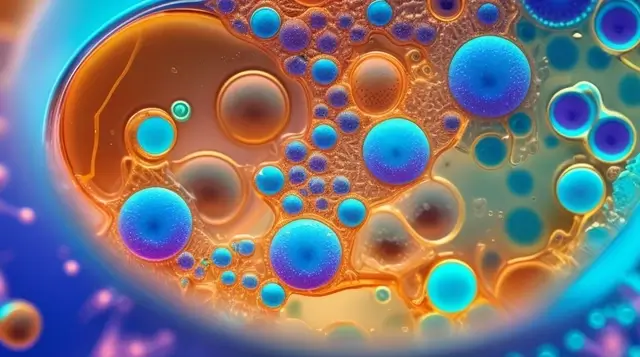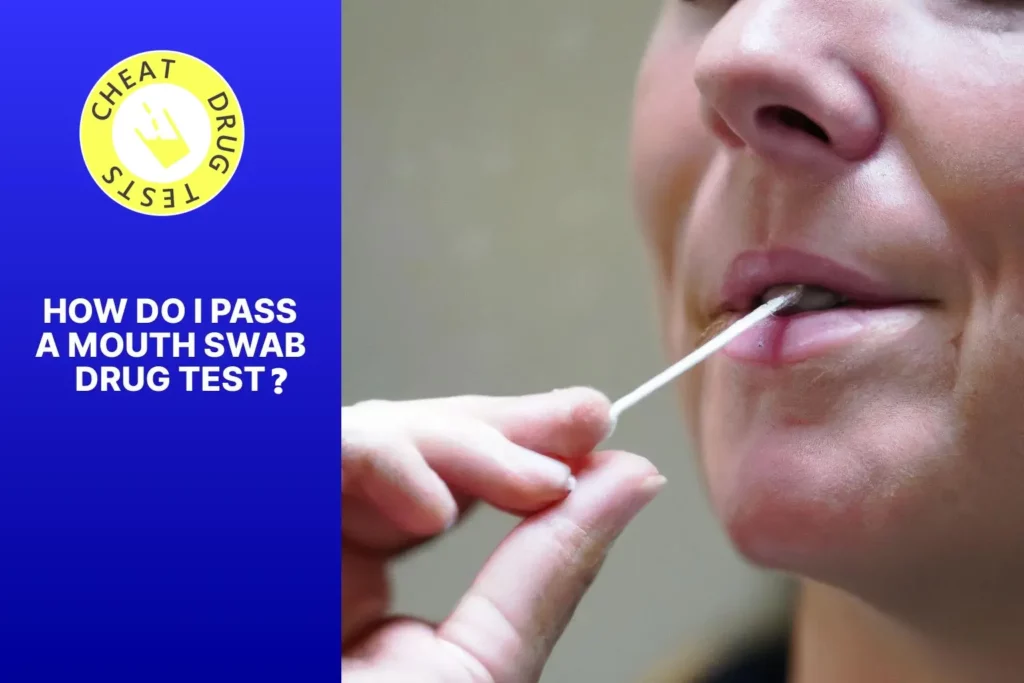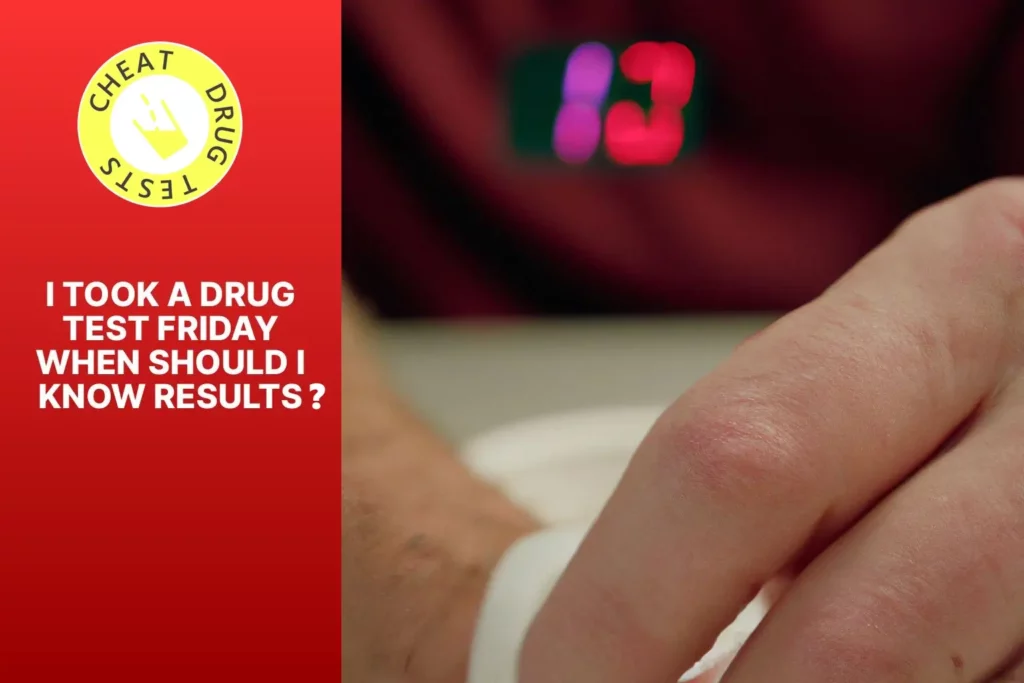To understand how a urine drug test works for detecting substances like fentanyl, DUI, alcohol, LSD, MDMA, crystal meth, cocaine, marijuana, and oxycodone, it’s essential to grasp the importance of urine drug tests. Additionally, we’ll also explore the common substances that are typically tested for. Let’s dive in and uncover the intricacies of this crucial screening method.
Understanding urine drug tests
To understand urine drug tests and how they work, dive into the realm of substance detection. Discover how urine drug tests can detect various substances, such as fentanyl, alcohol, LSD, MDMA, crystal meth, cocaine, marijuana, and oxycodone. Additionally, explore the factors that can influence the results of these tests. Get ready to unravel the secrets behind urine drug tests!
The importance of Urine Drug Tests
Urine drug tests are essential for many industries. They show if drugs are present in a person’s system, helping employers maintain a drug-free workplace. This ensures the safety and health of their employees.
In healthcare, urine tests are also essential. They help diagnose and monitor patients with substance abuse issues. Doctors can track progress or identify relapses.
But, urine drug tests have limits. They may not show long-term drug use. False positives can happen due to medication or supplements. So, more testing and info may be needed.
Common Substances Tested for in Urine Drug Tests
Accurate determination of substances is key for successful decision-making and appropriate treatment plans. To help, a table may be used to organize the data. It could contain the Substance Name, Purpose of Testing, Common Testing Methods, and Potential Health Hazards. This allows quick access to essential info and wise judgments.
Besides these substances, testing protocols might differ. Eg. athletes are tested for performance-enhancing drugs and workers with hazardous materials could be screened for toxic chemicals.
A noteworthy example of substance testing is an employee of a chemical manufacturing plant. Routine screenings discovered the worker had elevated levels of a hazardous substance. Faster action allowed prompt medical treatment and averted further health complications.
In conclusion, substances tested for include drugs, alcohol, toxins, infectious agents and genetic markers. Accurate detection guarantees safety measures are applied based on results from the various testing methods used in different contexts.
How a Urine Drug Test Can Detect Illegal Narcotics
Urine drug tests are a must for detecting substances in the human body. These tests detect drugs or their metabolites in a urine sample. By examining the urine, drug tests can show recent drug use (and/or abuse).
The process of finding substances in urine has several steps. First, collecting and storing the urine sample, with care, to prevent contamination. Second, laboratory analysis of the sample. This could include gas chromatography-mass spectrometry (GC-MS) or immunoassay.
These techniques detect certain compounds or markers that indicate drug use. For example, GC-MS separates the components of the urine sample based on molecular properties and identifies drugs by mass spectrometry.
To make urine drug tests more accurate and reliable, certain suggestions should be followed:
- Ensure proper collection and storage of urine samples to avoid contamination.
- Regular calibration and maintenance of laboratory equipment for accurate results.
Additionally, quality control measures reduce errors and increase consistency in testing procedures. Lastly, training of laboratory personnel enhances proficiency in conducting these tests.
By applying these suggestions, healthcare professionals can make urine drug tests more effective and give accurate information about recent drug use. This helps when making decisions about patient care or workplace drug screening programs. Thus, understanding how urine drug tests work is important for maintaining public health and safety.
Factors that can influence test results
Many things can influence the outcome of pee drug testing. These are:
- When it’s done: How long it’s been since the drug was taken can change if its molecules show up in pee.
- Dehydration: Diluted pee can give false-negatives, and concentrated pee can give false-positives.
- Metabolism: Everyone is different, so drugs leave the body at different rates.
- Interactions: Some drugs and substances can affect the results.
Also, if the sample is contaminated or not stored properly, the results may be wrong. To ensure accurate results, these ideas may help:
- Get organized: Consistent protocols can reduce mistakes.
- Double check: If the first test is positive, use another method to be sure.
- Seek advice: Talk to a doctor if drugs are being taken that could affect the results.
- Be informed: Educate people about the things that could change test outcomes.
By following these steps, the accuracy of the test can be improved. It’s very important to consider these suggestions for accurate drug testing.
Preparing for a urine drug test
To prepare for a urine drug test, it is important to follow certain steps and avoid specific foods and drinks. With the goal of obtaining accurate results, this section will guide you through the necessary precautions. Discover the essential measures to take before the test, as well as the foods and drinks to avoid prior to your urine drug test.
Steps to take before the test
Before a urine drug test, there are some steps to take for accurate results. These can help prepare and avoid issues!
- Stop drug use. Don’t use any drugs in the days before the test – both illegal and prescription ones that could affect the results. Ask your health provider if worried about specific meds.
- Stay hydrated. Drink lots of water before the test to flush out traces. Just don’t drink too much right before or it may raise suspicion.
- Follow instructions. Read and understand the rules from the testing facility or employer. This may include fasting, collecting a sample, or giving info like meds you’re taking.
- Prepare documents. Get necessary documents/ID ahead of time, if needed. And note, tampering or trying to manipulate the test is illegal and wrong.
Pro Tip: Get in touch with the testing facility or employer if concerned or have questions. It’s better to be informed and prepared than risk issues later.
Foods and drinks to avoid prior to the test
Before a urine drug test, it’s important to know what foods and beverages to avoid. These can impact the results. Here are some key points:
- Alcohol: Don’t drink any for 48 hours before the test. It can affect liver enzyme levels.
- Caffeine: Moderate consumption is ok, but too much can dilute urine.
- Poppy Seeds: Avoid foods with these like bagels and muffins. They can cause false-positive drug results.
- Grapefruit Juice: This juice can interact with substances in the body. Avoid it.
- High Sugar Content Foods: Limit sugary drinks like soda and energy drinks. Sugar can change urine composition.
- Herbal Supplements: Read labels and talk to a doctor if unsure. They can interfere with tests.
STAY HYDRATED!
John learned this the hard way. He was careful to avoid anything on the list, but he drank chamomile tea each day without realizing it contains opiates. The drug test gave a false-positive for opioids, delaying his employment process. This serves as a reminder to be extra cautious with foods and drinks that can affect drug tests.
The process of urine drug testing
To understand how a urine drug test works, let’s dive into the process of urine drug testing. Begin with the collection of the urine sample, followed by the laboratory analysis of the sample. This comprehensive approach ensures accurate results and helps identify substances such as fentanyl, alcohol, LSD, MDMA, crystal meth, cocaine, marijuana, and oxycodone.
Collection of the urine sample
Urine sample collection is an important part of drug testing. It involves getting a specimen that will be checked for drugs in someone’s system. The accuracy and reliability of the process is essential for getting accurate results.
To make sure the urine sample is collected well, these 5 steps should be followed:
- Prepare the area: Clean and make sure it is private. Make sure it is not contaminated and has all the needed supplies.
- Get a container: Get a sterile container. Label it with the individual’s info. Make sure it is airtight and not contaminated.
- Give instructions: Tell the person what to do clearly. Make sure they understand any rules or procedures that need to be followed.
- Collect the sample: Give them the container and let them do it in private. Make sure they know how much urine to collect. Guide them if necessary.
- Store and transport: Seal and label the container for storage and transportation. Follow the laboratory requirements for delivery.
It is important to keep chain of custody during the process. This ensures sample integrity and legal admissibility.
Interesting fact: Urine drug testing has been used for centuries to assess drug use. The earliest evidence dates back 5,000 years ago in Ancient Mesopotamia. Clay tablets were found with medical texts that documented urine inspection for signs of drug ingestion.
Laboratory analysis of the sample
Laboratory analysis is key in urine drug testing. It involves examining a sample to spot and measure the presence of certain drugs or their metabolites. This is done in a controlled lab environment, using advanced techniques and tools.
A screening is done in the first step. It looks for common drugs. If a sample shows positive, further tests are done to get the type and amount of drugs.
To help with the analysis, a table is made. It has columns for drug name, concentration level, and other info. This helps compare results from different samples and helps experts interpret them accurately.
The analysis also checks if someone tried to change the test results. This is done by looking at pH levels, specific gravity, creatinine levels, and temperature.
Remember: to guarantee reliable results, you must follow the right procedures to collect and store samples. Not following these can affect the accuracy of the laboratory analysis and give inconclusive or false results.
Interpreting urine drug test results
To interpret urine drug test results accurately, it’s crucial to understand the nuances of positive and negative results, as well as the possibility of false positives and false negatives. This knowledge will empower you to make informed decisions based on the outcome of your urine drug test. Stay tuned to discover the truth behind your test results.
Positive and Negative Results by Test Type
| Result | Interpretation |
|---|---|
| Positive | Urine sample has drugs or their by-products. |
| Negative | Urine sample doesn’t have drugs or their by-products. |
False-positive and false-negative results can happen due to improper collection, storage, or analysis. To be sure, extra tests are needed.
It’s good to remember: different drugs stay in urine for different times. Some substances act like illegal drugs, even if they aren’t.
NIDA says urine drug testing is helpful for healthcare providers. It shows how people are doing, and helps them stay away from drugs.
False positives and false negatives
The table below can help us understand false positives and false negatives in urine drug tests.
| True positive | True negative | |
|---|---|---|
| Detected as positive | Yes | No |
| Detected as negative | No | Yes |
A true positive means correctly spotting a substance in someone’s system. A true negative means accurately not detecting one.
False positives may incorrectly show substances that aren’t really there. This may lead to misunderstanding and unnecessary worry. False negatives are when existing substances go undetected. This can make test results inaccurate.
Various things can cause false positives. For example, medication or diet may create metabolites like certain drugs. Medical conditions or testing mistakes can also contribute.
This article is based on research from places like Mayo Clinic.
To interpret urine drug test results correctly, we need to look at false positives and false negatives. Knowing about them and their causes can help experts get more accurate results and avoid misleading conclusions.
Frequently asked questions about urine drug tests
To understand the frequently asked questions about urine drug tests, let’s dive into how they work. Discover if certain medications can influence the test results and explore the duration substances can remain detectable in urine. Find solutions regarding the effects of fentanyl, DUI cases, alcohol, LSD, MDMA, crystal meth, cocaine, marijuana, and oxycodone on urine drug tests.
Can certain medications affect the test results?
Medication can affect urine drug test results. This is because certain drugs contain elements that are detected during the testing. It’s important to let the tester know of any drugs you take, so that the results are accurate.
Some drugs may lead to false positives or false negatives. For instance, ibuprofen can cause a false positive for marijuana. Also, certain antidepressants could lead to a false positive for amphetamines.
The drugs being tested for also impact how medications affect the overall test results. These tests target opioids, benzodiazepines, or stimulants. Knowing which drugs are screened for can show if any medications will affect the outcome.
In order to get reliable results, inform the tester of any drugs you are on. This will help them interpret the results better and avoid potential errors. Transparency is key when it comes to medication use and drug testing. By being honest about your meds, you can get accurate findings and keep calm throughout. Don’t let confusion stop you from being truthful and jeopardize your health.
How long can substances be detected in urine?
Different substances can be detected in urine for different times. Here is some information regarding the detection time of commonly tested substances:
| Substance | Detection Time |
|---|---|
| Alcohol | Up to 24 hrs |
| Amphetamines | 1-3 days |
| Cocaine | 2-4 days |
| Marijuana | Occasional use: 3 days; Regular use: 5-7 days; Heavy use: 30 days |
| Opiates | Heroin: 1-3 days; Codeine: 1-2 days; Morphine: 1-3 days |
Remember, these detection times may vary depending on factors like metabolism, hydration levels, and individual differences.
Prescription medications and certain illicit drugs may also show up in urine tests. These include benzodiazepines, barbiturates, methadone, and PCP. Detection times for these substances vary greatly; from a few days to several weeks.
To make sure results are accurate, it is important to follow proper collection and handling procedures when doing urine drug tests. This includes using quality testing methods and equipment, and keeping a strict chain of custody for all samples.
Conclusion
To draw this article to a close, let’s discuss the importance of urine drug testing in various situations, such as detecting fentanyl in DUI cases. We’ll also explore the overall benefits and limitations of this type of testing. It’s crucial to understand how a urine drug test works and its significance in ensuring safety and maintaining sobriety. Let’s delve into these sub-sections now.
The importance of urine drug testing in various situations (e.g., fentanyl detection in DUI cases)
Urine drug testing is important in many situations. It’s used to detect fentanyl in DUI cases, for example. It’s a tool to identify drug use and help keep people safe. In DUI cases, urine testing can show if the driver took fentanyl, an opioid which can slow reaction time. This info is critical for officers and prosecutors. Testing urine samples accurately helps ensure fair legal outcomes.
Urine testing isn’t just for DUI cases. It’s also used in healthcare, workplace safety, and sports. Healthcare providers use it to monitor patients’ drug use and spot possible abuse. Employers do it to make sure their staff are fit for work. Sports organizations do it to stop doping.
For accurate results, several things need to be done:
- Use reliable, scientifically-validated methods. This ensures the right detection and avoids false positives or negatives.
- Analyze the samples quickly. Delayed testing can make drugs degrade or disappear, ruining results.
- Set clear guidelines and protocols for interpreting the results. Different drugs have different detection windows. Knowing this is key for correct interpretation.
By taking these steps, urine drug testing can be a success in various contexts, such as detecting fentanyl in DUI cases. Technology and research can improve accuracy even more, helping create safer communities and justice.
Overall benefits and limitations of urine drug testing
Urine drug testing has its advantages and drawbacks. Let’s examine them.
Let’s take a look at the benefits and drawbacks of urine drug testing with this table:
| Drugs Detected | Detection Window | Benefits | Limitations |
|---|---|---|---|
| Cannabis | Up to 30 days | Accessible & cost-effective | Can’t detect recent use accurately |
| Opiates | Up to 3 days | Non-invasive method for detecting drug use | Small detection window for certain drugs |
| Cocaine | Up to 4 days | Established accuracy & reliability | Vulnerable to sample adulteration |
| Amphetamines | Up to 3 days | Can screen for multiple drugs simultaneously | Possibility of false positives |
Also, it’s significant to note that urine drug testing can provide special details about an individual’s drug use. This info can give useful insights into patterns of substance abuse. It helps healthcare professionals and employers make wise decisions about treatment plans or job offers.
To make urine drug testing more effective, there are some tips. For example, proper collection procedures and keeping track of the sample can reduce the risk of contamination or tampering. Moreover, confirmatory tests for positive results in initial screening can help avoid false positives.
By following these recommendations, the accuracy and dependability of urine drug testing can be improved. This will result in better identification of potential substance abuse issues.

Frequently Asked Questions
Q: What is a urine drug test?
A urine drug test is a type of screening test that detects the presence of drugs in a person’s urine. It is commonly used by employers, law enforcement, and healthcare providers to determine if someone has been using drugs.
Q: How does a urine drug test work?
A urine drug test works by analyzing a urine sample for the presence of specific drugs or their metabolites. The test can detect a wide range of substances, including fentanyl, alcohol, LSD, MDMA, crystal meth, cocaine, marijuana, and oxycodone. The urine sample is typically collected in a sterile cup and sent to a laboratory for analysis.
Q: How long can drugs be detected in a urine drug test?
The detection window for drugs in a urine drug test varies depending on the specific drug and individual factors. Generally, drugs can be detected in urine for up to a few days to a few weeks after use. However, some drugs like marijuana can be detected for up to 30 days in frequent users.
Q: Can a urine drug test detect alcohol?
Yes, a urine drug test can detect the presence of alcohol. However, it is important to note that urine tests are not the most accurate method for detecting recent alcohol use. Breathalyzer tests or blood tests are more commonly used to measure alcohol levels.
Q: Can a urine drug test determine the specific amount of drugs in my system?
No, a urine drug test cannot determine the specific amount of drugs in your system. It can only detect the presence or absence of drugs and provide a qualitative result. If a positive result is obtained, further testing may be required to assess the amount of drugs present.
Q: Can I cheat a urine drug test?
Attempting to cheat a urine drug test is not recommended and can have serious consequences. Laboratories have protocols in place to detect adulterated or substituted samples. Additionally, tampering with a drug test is illegal in many jurisdictions and can result in legal penalties.
Cheat Drug Test articles & impartial reviews are funded by affiliate commissions, at no extra cost to you, our awesome readers. Learn more



